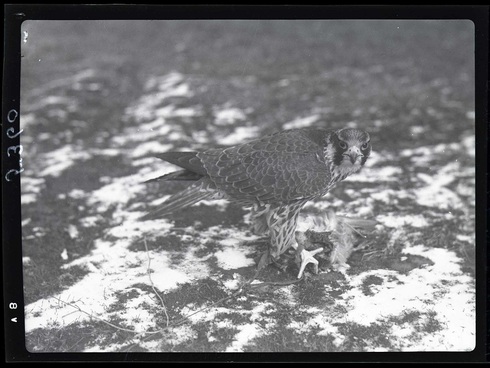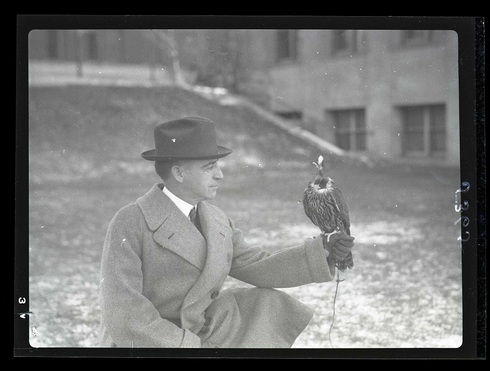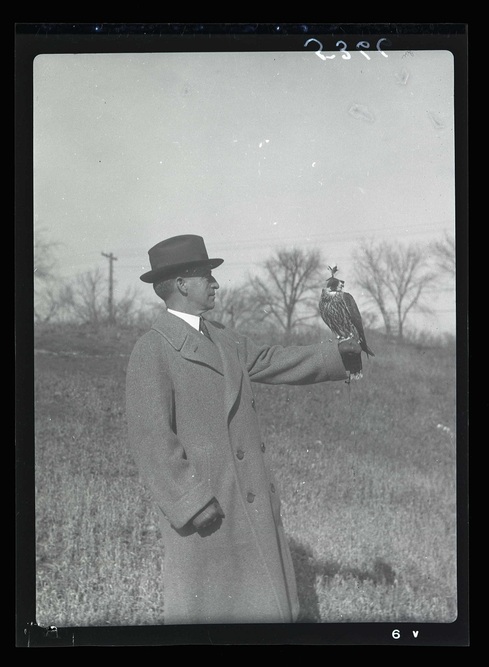In his autobiography, My Life in Natural History, former Bell Museum preparator and director Walter Breckenridge provided a description of the Peregrine Falcon and an introduction to the sport of falconry:
“One of my favorite birds is the peregrine falcon. Several Minnesota raptors have fluctuated greatly in abundance during the past century due directly and indirectly to human disturbance. The spectacular peregrine falcon has experienced contact with Man dating back into prehistoric times. Its hunting abilities attracted attention of primitive humans who first realized the bird has possibilities for aiding his food gathering efforts. This results in its being subjected to semi-domestication in the activity of falconry. This at first was regarded as a practical means of securing food but it also became a sport engaged in mainly by royalty with the use of different species of falcons being limited to the various social levels of the ruling classes. Still today, falconry is the sport of a very limited group who are willing to engage in the burdensome care and training of the birds. Of the numerous species of falcons, the peregrine was the most widely sought after. The bird was found throughout the subartic parts of both hemispheres, although it never was abundant or even common.”

– Duck Hawk (Peregrine Falcon), juvenile male, belonging to William Feeney, November 8, 1936

– Duck Hawk (Peregrine Falcon), juvenile male, lead by owner William Feeney, November 8, 1936
Find out more about the Peregrine Falcon at the University of Minnesota’s Raptor Center. For more on falconry, read “A look at falconry in Minnesota” from the Star Tribune.


